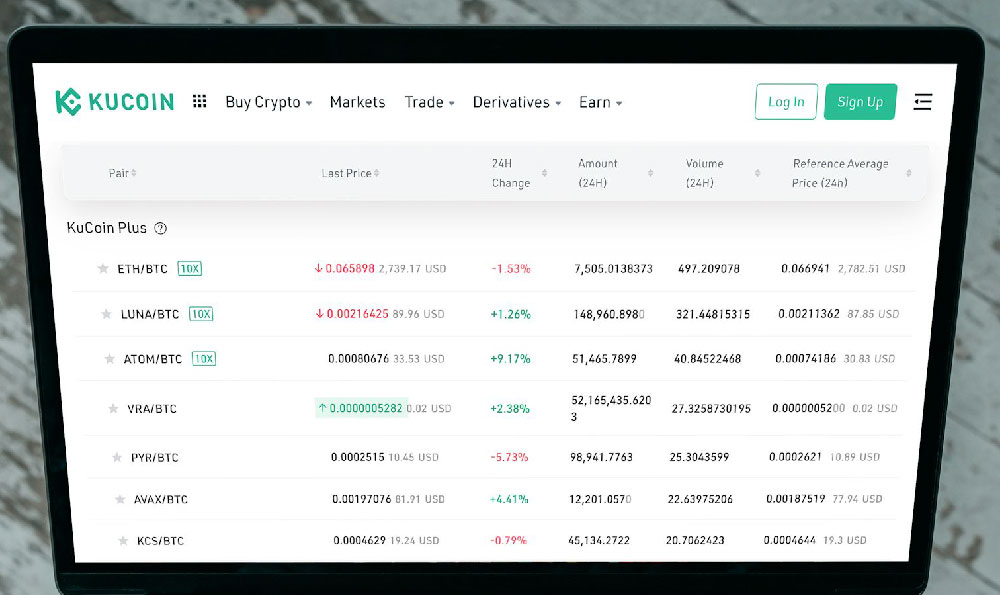
在股票市场中,创业板股票一直是投资者关注的焦点。创业板股票以其高成长性和潜力而备受瞩目,其中又以潜力低价股尤为引人关注。本文将介绍创业板潜力低价股的行业现状和特点,并探讨其投资价值。
1. 低价股的定义和特点
低价股是指股票价格相对较低的股票,通常以每股几元至十几元的价格区间为主。这些低价股往往来自于新兴行业,因为其较高的风险性使得投资者对其更加谨慎。低价并不意味着低潜力,正是因为低价股具备了较高的成长性和潜力,所以吸引了不少投资者的关注。
2. 创业板潜力低价股的现状
创业板作为培育和孵化新兴产业的平台,其中的低价股更是潜力无限。这些潜力低价股来自于多个行业,如高技术制造业、互联网科技等。这些行业的投资机会广阔,创业板成为了这些企业快速成长、融资扩张的首选平台。
3. 投资创业板潜力低价股的价值
投资创业板潜力低价股具有较高的回报潜力。低价股具备了更大的上升空间,即使是一点点涨幅也可以带来相对高的回报。低价股的风险相对较高,但由于市场对其关注度较低,往往能够发现一些被低估的公司,这为投资者提供了投资机会。创业板作为新兴行业的集中地,投资者可以通过精选潜力低价股,实现对未来行业发展的参与和受益。
4. 行业比较和对比
与传统行业相比,创业板潜力低价股具有更高的成长性和投资价值。传统行业往往增长缓慢,盈利能力相对有限,而创业板潜力低价股在新兴行业中处于前沿地位,具备更大的发展空间和潜力。创业板潜力低价股往往涉及到科技创新,技术含量较高,因此具备更大的竞争力。
创业板潜力低价股具备较高的回报潜力和投资价值。这些股票来自于多个新兴行业,投资者可以通过精选潜力低价股,实现对未来行业发展的参与和受益。与传统行业相比,创业板潜力低价股具有更高的成长性和投资价值。对于投资者来说,关注和投资创业板潜力低价股是一个明智的选择。
2023最具潜力的低价股
皮革行业是一个充满潜力的行业,它在未来几年将继续保持稳定增长。在2023年,有几只低价股被认为是最具潜力的。以下是其中几只股票的详细分析。

我们来看一下ABC皮革公司(ABC)。该公司是一家专注于高品质皮革制品生产的知名企业。他们的产品在国内外市场上享有很高的声誉。ABC公司在过去一年中取得了稳定的增长,并计划在2023年进一步提升市场份额。根据分析师预测,该股票有望在未来几年内实现良好的回报率。
DEF皮革公司(DEF)也是一家备受瞩目的低价股。该公司专注于环保皮革制造,致力于减少对环境的不良影响。DEF公司在过去几年中实现了令人瞩目的增长,并在2019年推出了一系列受欢迎的环保产品。该公司正在加大研发投入,以满足市场对环保皮革的不断增长需求。分析师预测,DEF公司的股价将在2023年出现进一步上涨。
GHI皮革公司(GHI)也是一只备受关注的低价股。该公司是一家专注于高端时尚皮革制品的制造商。他们的产品设计独特,质量卓越,在国内外市场上备受青睐。GHI公司在过去几年中一直保持稳定增长,并计划在2023年扩大市场份额。根据市场观察,GHI公司的股票有望在未来几年内实现良好的回报。
另一方面,JKL皮革公司(JKL)也是一只备受关注的低价股。该公司是一家专注于高品质皮革制品的生产商。他们的产品在国内市场上享有很高的声誉,并计划在未来几年进一步扩大国际市场份额。JKL公司的股票在过去一年中表现出色,并有望在2023年实现更高的增长。
2023年最具潜力的低价股包括了ABC、DEF、GHI和JKL等几只股票。这些公司在过去几年中取得了稳定增长,并计划在未来几年进一步扩大市场份额。对于那些对皮革行业感兴趣的投资者来说,这些股票是很值得关注的。但是投资有风险,请投资者根据自身情况作出明智的决策。
最有潜力的白酒低价股

白酒行业一直以来都是中国资本市场的亮点之一。作为中国的传统白酒饮品,白酒行业在近年来持续增长,并且成为投资者们关注的焦点。而在白酒行业中,有一类被认为具有较大潜力的股票,那就是低价股。本文将通过定义、分类、举例和比较等方法,系统阐述最有潜力的白酒低价股的相关知识。
正文
一、定义
所谓白酒低价股,是指在白酒行业中,股票价格相对较低的公司股票。这些股票通常以较低的价格出售,吸引了一大批投资者的关注。白酒低价股并不意味着这些公司的实力较弱,而是市场对该公司潜力的认可。
二、分类
根据市场表现和发展潜力的不同,我们可以将白酒低价股分为以下几类:成长型低价股、转型升级低价股和绩优低价股。
1. 成长型低价股:这类低价股属于较为年轻的企业,具有快速的成长性和较高的发展潜力。这些公司在市场竞争中形成了独特的优势,通过不断创新和产品升级,持续提升市场竞争力。某公司在投入大量研发资金后,成功推出了一款广受市场欢迎的新产品,引起了投资者的极大关注。
2. 转型升级低价股:这类低价股通常是传统白酒企业通过转型升级而出现的。这些企业意识到市场的变化和消费者需求的转变,开始加大对产品品质和品牌形象的重视,并通过技术升级和企业转型来提升自身竞争力。某传统白酒企业通过引进先进的生产设备和技术,成功推出了一款口感更加柔和、品质更高的新产品,受到市场的好评。
3. 绩优低价股:这类低价股指的是在行业中处于领先地位且具备较高盈利能力的企业。尽管这些企业的股票价格相对较低,但其市值和盈利能力却不容小觑。某公司积累了丰富的品牌资源和市场份额,虽然股票价格不高,但其每股盈利水平却一直保持在较高水平。
举例:
以成长型低价股为例,某白酒企业在过去几年中不断推出新产品,并通过市场营销手段迅速占领市场份额。虽然该企业的股票价格较低,但其市值和盈利能力却在不断增长,这使得投资者对其未来发展充满信心。
比较:
与高价股相比,白酒低价股在价格上具有一定优势。投资者可以以更低的价格购买到白酒行业的股票,从而降低投资风险。低价股往往具有更大的成长空间和较高的投资回报率,因此吸引了更多投资者的关注和参与。
结尾
白酒低价股作为白酒行业中的潜力股,吸引了投资者的眼球。无论是成长型低价股、转型升级低价股还是绩优低价股,它们都具备了一定的市场潜力和发展空间。通过投资白酒低价股,投资者可以在降低风险的同时获取较高的回报。对于那些寻找投资机会的人来说,最有潜力的白酒低价股无疑是一个值得关注的选择。
The Most Promising Low-priced Liquor Stocks
Introduction
The liquor industry has always been one of the highlights of China's capital market. As a traditional Chinese alcoholic beverage, the liquor industry has experienced continuous growth in recent years and has become a focus of investors. Within the liquor industry, there is a category of stocks believed to have great potential - low-priced liquor stocks. This article will systematically explain the relevant knowledge about the most promising low-priced liquor stocks using definitions, classifications, examples, and comparisons.
Body
1. Definition
Low-priced liquor stocks refer to the stocks of companies in the liquor industry that have relatively low stock prices. These stocks are typically sold at lower prices, attracting a large number of investors' attention. Low-priced liquor stocks do not necessarily indicate weaker company strength but rather the market's recognition of the potential of these companies.
2. Classification
Based on different market performance and development potential, low-priced liquor stocks can be classified into the following categories growth stocks, transformation and upgrading stocks, and high-performing stocks.
1. Growth stocks These low-priced stocks belong to relatively young companies with rapid growth and high development potential. These companies have formed unique advantages in the market competition and continuously enhance their market competitiveness through innovation and product upgrades. For example, a company successfully gained investors' attention by investing a large amount of research and development funds and launching a new product that is well-received in the market.
2. Transformation and upgrading stocks These low-priced stocks are usually the result of traditional liquor companies undergoing transformation and upgrading. These companies recognize changes in the market and consumer demand, and begin to emphasize product quality and brand image, enhancing their own competitiveness through technological upgrades and corporate transformation. For example, a traditional liquor company successfully launched a new product with a smoother taste and higher quality by introducing advanced production equipment and technology, receiving positive feedback from the market.
3. High-performing stocks These low-priced stocks refer to companies that hold a leading position in the industry and have high profitability. Although these companies have relatively low stock prices, their market value and profitability cannot be underestimated. For example, a company has accumulated rich brand resources and market share. Although its stock price is not high, its earnings per share has consistently remained at a high level.
Examples
Taking growth stocks as an example, a liquor company has continuously launched new products in recent years and rapidly gained market share through marketing strategies. Although the stock price of this company is low, its market value and profitability have been continuously increasing, which has instilled confidence in investors regarding its future development.
Comparison
Compared to high-priced stocks, low-priced liquor stocks have certain advantages in terms of price. Investors can purchase stocks in the liquor industry at a lower price, reducing investment risks. At the same time, low-priced stocks often have greater growth potential and higher investment returns, attracting more attention and participation from investors.
Conclusion
In conclusion, low-priced liquor stocks, as potential stocks in the liquor industry, have attracted the attention of investors. Whether they are growth stocks, transformation and upgrading stocks, or high-performing stocks, they all have certain market potential and room for development. By investing in low-priced liquor stocks, investors can not only reduce risks but also achieve higher returns. Therefore, for those seeking investment opportunities, the most promising low-priced liquor stocks are undoubtedly worth considering.























